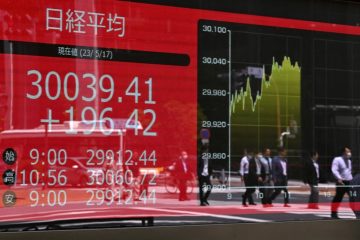Non-bank firms are now big players in America’s mortgage market
TWICE IN THE past 30 years, housing finance has taken down America’s economy. As interest rates rise and the housing market stutters (see article), regulators are again pondering the risks from the mortgage market—this time from a shift towards non-bank originators.
These firms, which create mortgages and often sell them on to other institutions, exist outside the bank-regulatory framework. They now account for 44% of lending by the top 25 originators, up from 9% in 2009, according to Inside Mortgage Finance, a trade publication. Five of the largest ten are non-banks, as is the largest retail mortgage originator, Quicken Loans. Their market share for servicing mortgages, or collecting monthly payments, has risen from 5% in 2009 to 41% in 2018.
Some of this shift reflects non-banks’ marketing and customer service. Instead of waiting for a distracted bank-branch employee to type information into an ancient computer, Quicken offers a smartphone app and responsive helplines.
But banks have also retreated from the market. Most home loans are originated by private institutions and then sold to government-sponsored entities, such as Fannie Mae and Freddie Mac, which securitise them. (Mortgages of the lowest credit quality tend to be sold to another government enterprise, Ginnie Mae.) In theory that should transfer the risk away from the originators. But when mortgage lending soured during the financial crisis, banks found themselves forced to take back some of their mortgages, or ended up paying fines. When they repossessed homes they were harried by state governments. Unwilling to bear those risks again, some banks have ceded ground to non-banks.
That does not mean they have left the field entirely. The period between issuing a mortgage and selling it on is usually financed by bank loans. As a paper from the Brookings Institution, a think-tank, notes, when banks stopped lending during the financial crisis, the number of mortgage companies fell by half. The business of servicing mortgages can become capital-intensive if a mortgage goes bad. The servicing firm must carry the costs until the mortgage is repaid—which can take years.
As a result, although banks are playing less of a direct role in the mortgage market, they are still indirectly exposed. Jelena McWilliams, the head of the Federal Deposit Insurance Corporation (FDIC), noted in a recent speech that banks’ exposure to non-banks has increased from $ 56bn in 2010 to $ 376bn in June this year.
Much about these non-banks is still unknown. Most are private: there is little information on their ability to survive a housing slowdown. Their finances may be fragile: Christopher Whalen, an analyst, reckons more than half have “blown through their bank credit covenants due to impaired capital, poor profitability or both”. He expects 10% to shut down this year. As Ms McWilliams pointed out, America regulates the entity rather than their activity. That approach means the threats from housing finance are always evolving. Regulators must be nimble.
This article appeared in the Finance and economics section of the print edition under the headline “Homing in”









